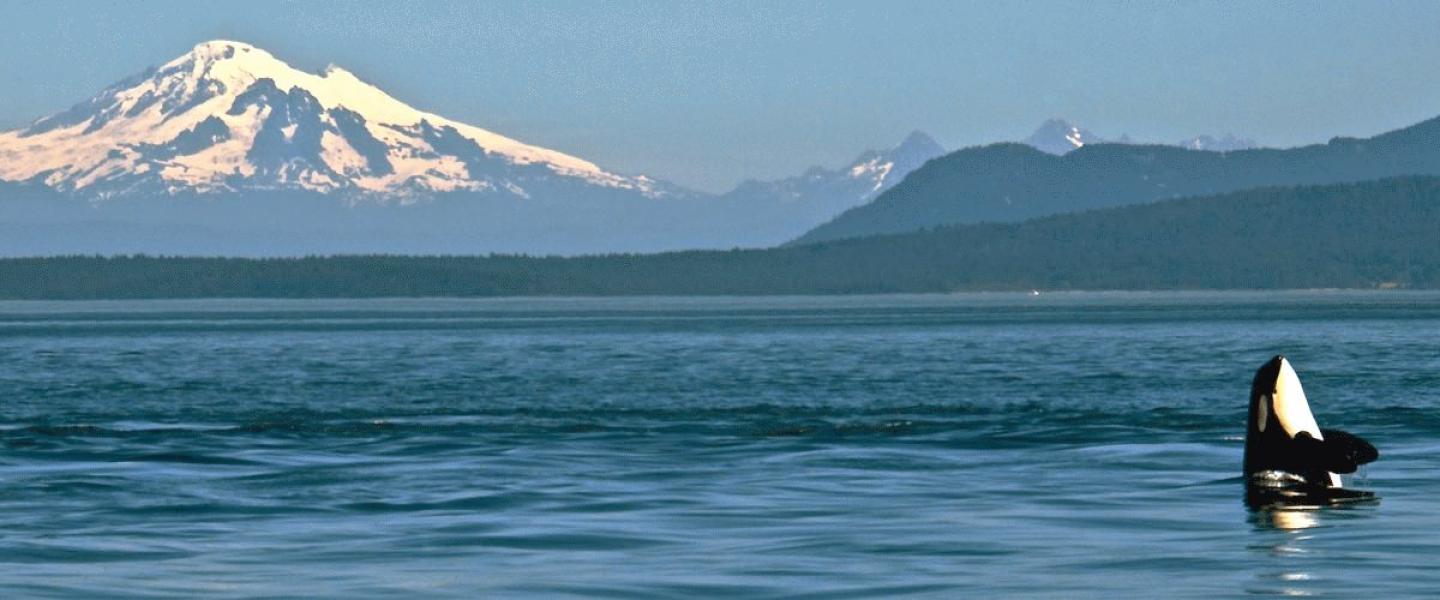
Today Captain Gabe and I left the dock on the Kittiwake with a boat full of excited passengers, sun in the sky and reports of something a little different than our average tour: Transients (cue dramatic music)
Transients, unlike the Southern Resident Killer Whales who subsist mostly on King Salmon, spend their time actively hunting other marine mannals. Here in the Salish Sea, their favorite snack is Harbor seals.
As we left Friday Harbor we headed South through the San Juan Channel towards Salmon Bank, an under-water ridge off of Cattle Point. As we approached, we began to see black dorsal fins erupting from the waves as killer whales cruised NorthEast at modest speeds of about twelve miles per hour. When orcas are engaged in chases with other fast animals, they can reach speeds of up to thirty miles per hour or more!
Kittiwake raced along to keep up as we followed them towards Long Island, just South of Lopez Island, where they slowed down and began to do what they do best: hunt.
Now Harbor seals are very cute and win the hearts of most people while they are awkwardly resting on exposed reefs, but seeing a pod of four-to-six-ton apex predators chowing down usually evokes a similar reaponse to watching a train wreck: it's horrible for the victims but you just cannot look away!
Harbor seals are quite abundant around the San Juans, in fact they are at what is known as "carrying capacity" this means that they are using all the recources that the ecosystem has to offer, and any more could be an issue. In this way, transient whales act as population control; as the seal population rises so will their main predator, resulting in an eventual decline in the seal population. This decline will also eventually affect the transient orca population. We see this boom-bust cycle in any specific predator/prey relationship including wolves and moose, lynx and snowshoe hare, cheetas and gazelles, and orcas and seals! These relationships allow adequate resources and keep the ecosystem balanced over time.
The transient pod we were watching (identified as the T060 group) began to duck into rocks, crevices and kelp forests on the hunt for defenceless seals. As they found one they sped up, ocasionally slapped it senceless with their powerfull tails, grabbed it in their jaws and shared it amongst the pod members. The whales were ecstatic about this newfound smorgasbord and let us know by spyhopping, breaching and having a grand ol' time with each new kill.
Possibly the most emotional moment was seeing all of the seals that were safely hauled out on shore watching with terror as their usual hangout spots were razed by twenty to thirty-foot predators. Definitely not a great day to be a seal.
For the passengers and naturalists, however, this was a very exciting and very uncommon look into the more brutal aspects of the natural world of the Pacific Northwest.
After we had seen enough carnage, we reluctantly made our way back to Friday Harbor.
A supreme Whale of a day in the San Juan Islands
Naturalist Mike J
M/V Kittiwake